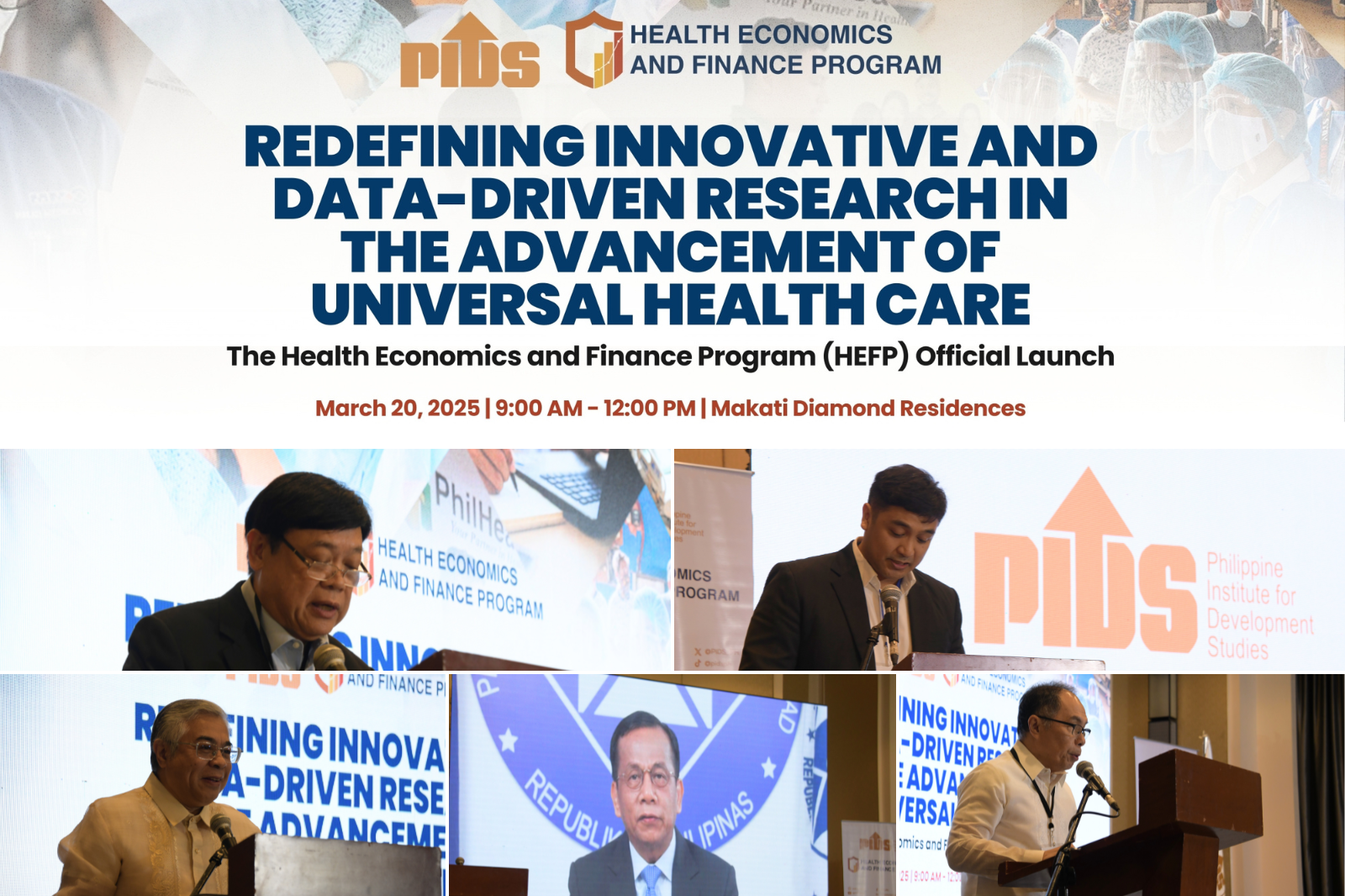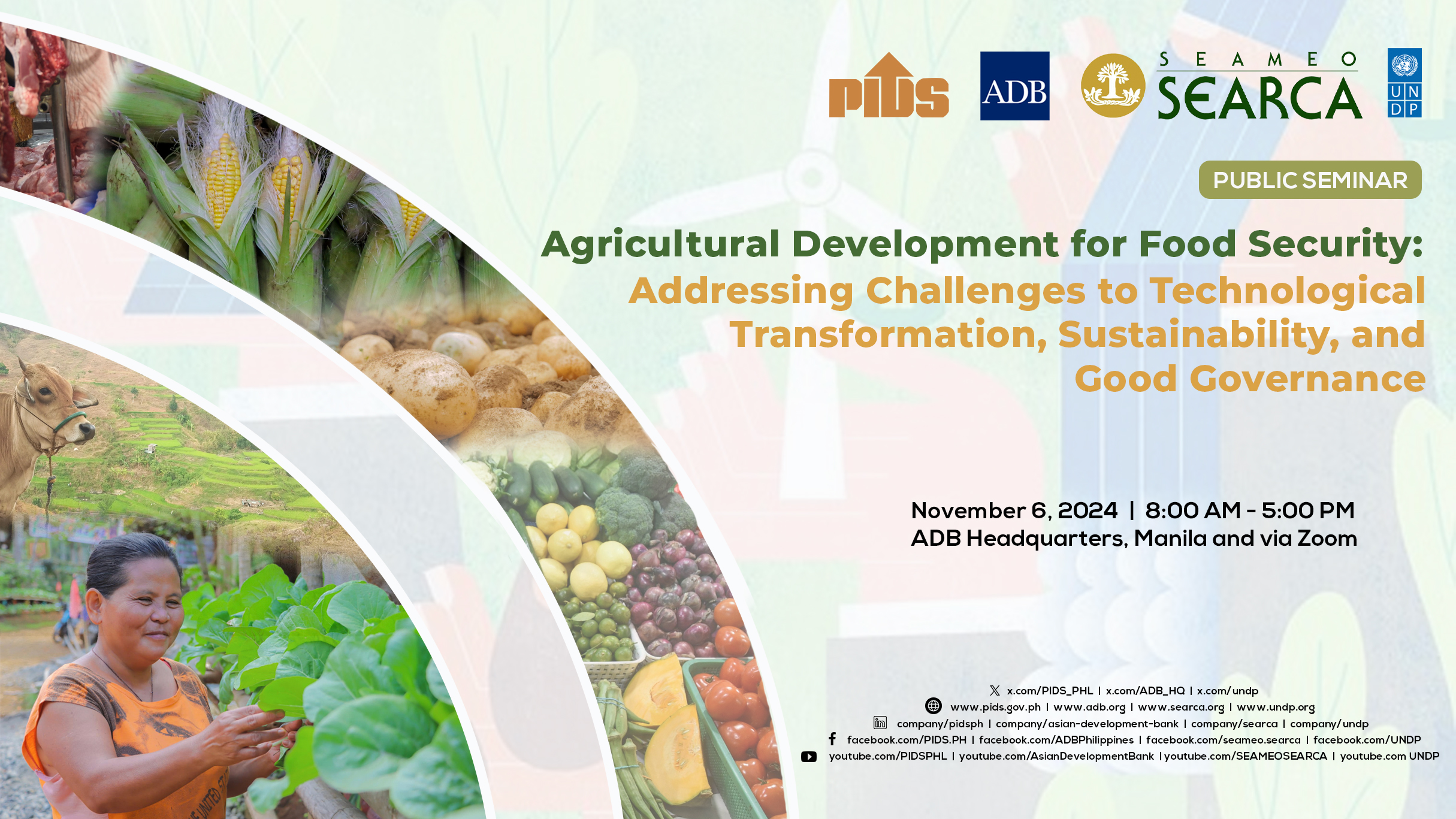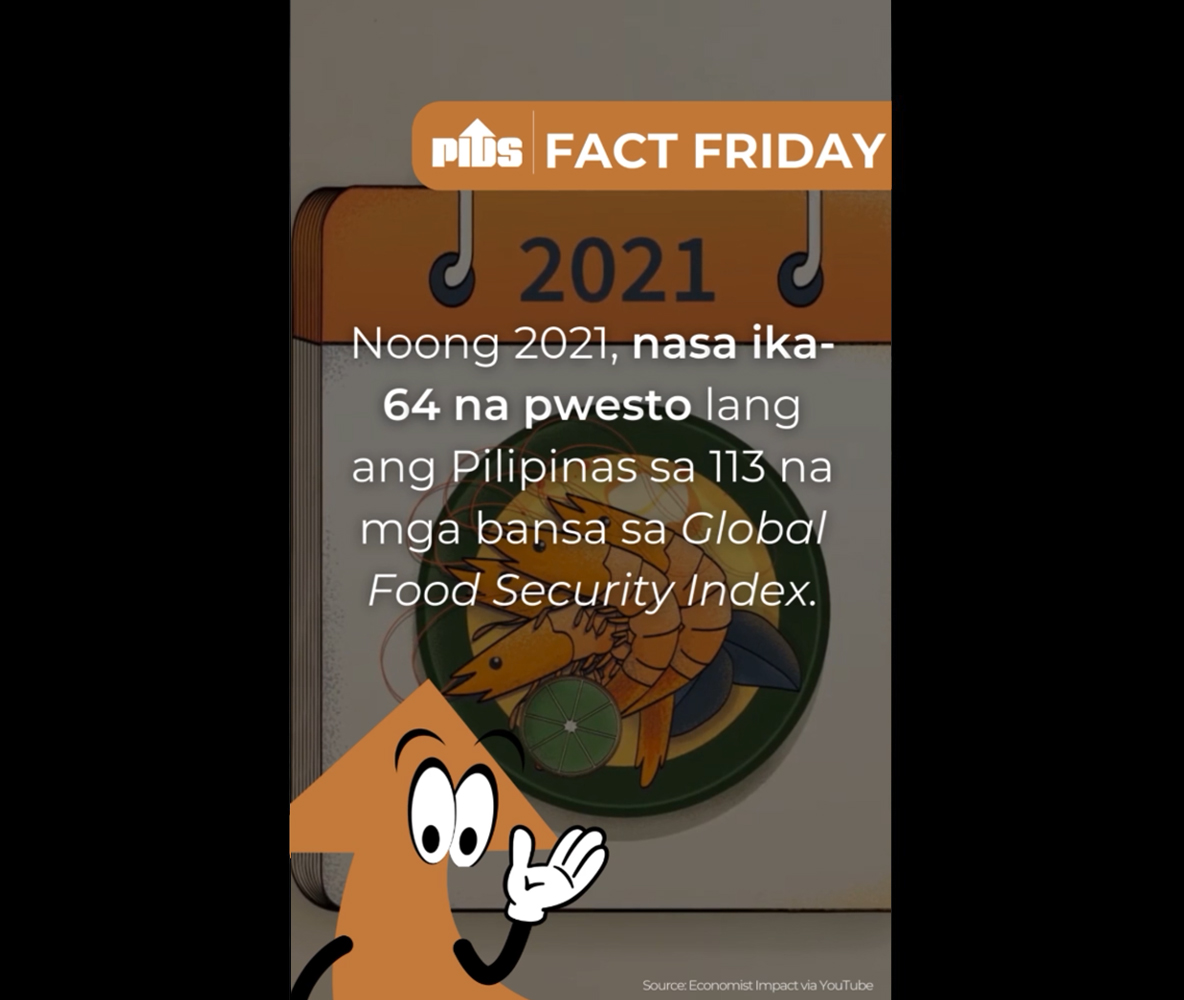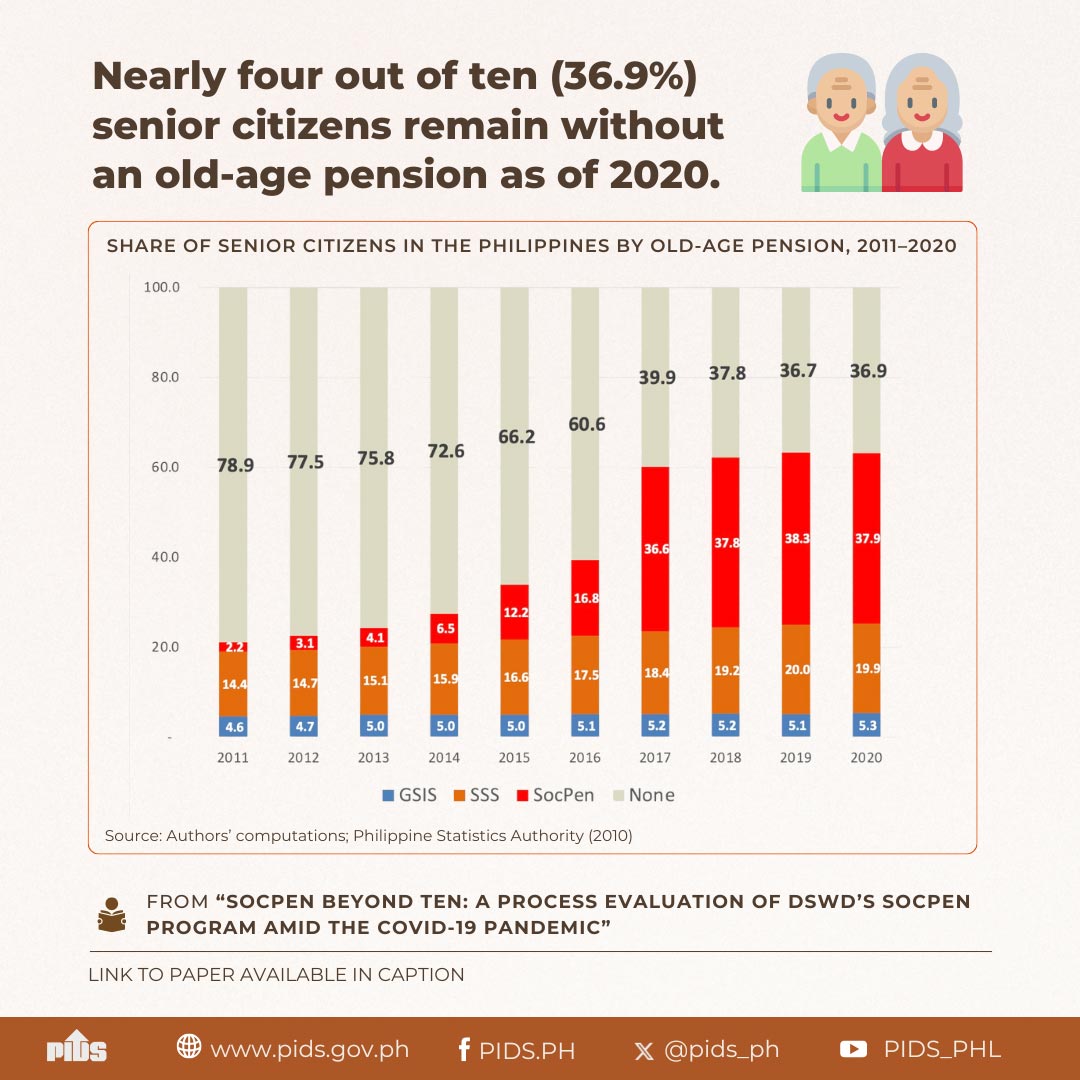Despite significant challenges, the Philippines can still attain food security by using a technology-enabled systems-based approach anchored on a multisectoral national food and nutrition plan that targets all while prioritizing people most in need.
This was according to Philippine Institute for Development Studies (PIDS) Supervising Research Specialist Ivory Myka Galang in her study, “Is Food Supply Accessible, Affordable, and Stable? The State of Food Security in the Philippines”, which she presented at a PIDS public webinar recently.
Galang stated that discussing food security is a must as it directly contributes to the higher goal of nutrition security.
She noted that, based on the World Food Summit definition, food security could be attained if the availability of food supply, physical and economic accessibility, utilization (food consumption, safety, and quality), and price and volume stability were ensured.
Data from the Philippine Statistics Authority showed that while the Philippines has a 100-percent self-sufficiency ratio (SSR) or the ability to produce to meet domestic demand, its rice, pork, and chicken SSR decreased to 90 percent. The SSR of tuna and galunggong or round scad was also reduced in recent decades to 90 and 80 percent, respectively.
Transport and food sector infrastructure affect food availability and people’s access to food. “Infrastructure plays a big role in determining the cost of food. Food, especially perishables, is sensitive to temperature and proper handling. If the food is damaged during transport due to uneven roads or substandard storage facilities, the likelihood of food wastage increases. This will cause food prices to also increase,” Galang expounded in Filipino.
The number of moderately or severely food-insecure Filipino households increased from 43 to 62 percent during the COVID-19 pandemic, based on Department of Science and Technology-Food and Nutrition Research Institute (DOST-FNRI) data. The Philippines dropped to 67th out of 113 countries in the Global Food Security Index Rating in 2022.
The food security framework of the Department of Agriculture (DA) encapsulates the government’s campaign on food security. Supported by various agencies and local government units, it has various programs and initiatives, including promoting home or urban gardening, developing prepackaged nutritious products, educational campaigns such as the Pinggang Pinoy seal, and school-based nutrition programs such as supplementary feeding.
However, Galang emphasized the importance of using a systems view in addressing food security challenges because the food system is connected to transport, energy, health, and other systems.
She also noted that equally pressing issues contributing to food insecurity must be resolved. These include increasing agriculture yield to ensure that the domestic food demands are met, addressing the issue of land conversion for residential and commercial development, helping smallholders increase their crop yield, keeping farming and food production costs low, and improving the roads and the transport system.
Still, the country stands a chance at realizing food security as evidenced by the collaboration of government agencies and other sectors to provide short-term and long-term solutions, Galang said.
Discussants at the webinar, namely DA-Policy Research Service Senior Staff Ian Jomari Panaga, National Nutrition Council Nutrition Surveillance Division Officer-in-Charge Ellen Ruth Abella, and DOST-FNRI Science Research Specialist Jason Paolo Labrador, echoed the need for collaboration of government agencies and partners to achieve food security.











